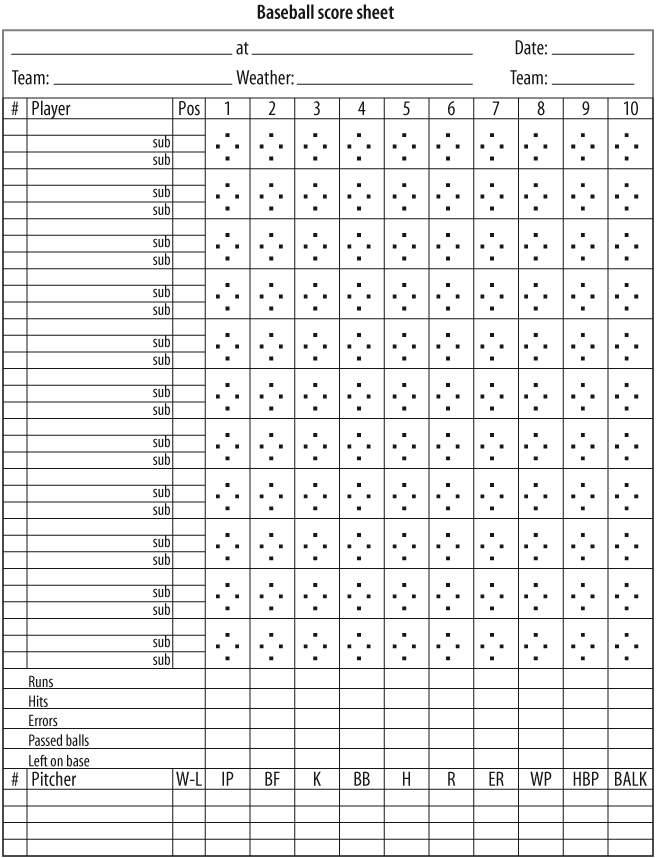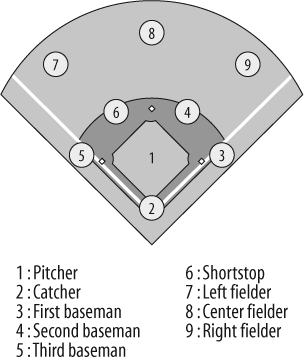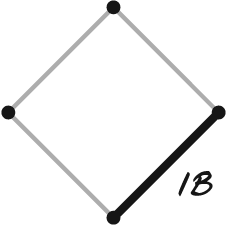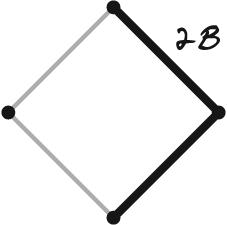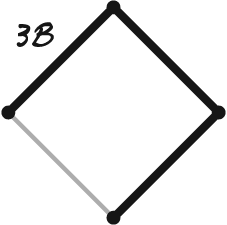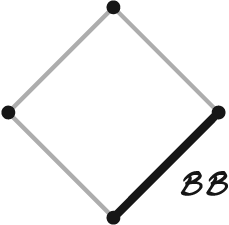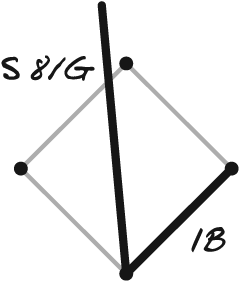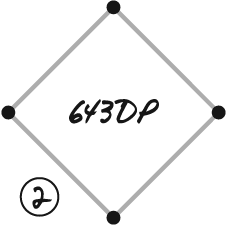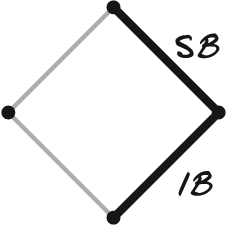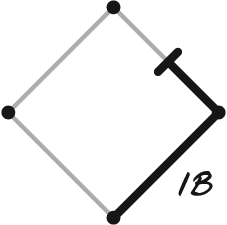This book shows you a lot of neat things you can do with computers and databases, but it’s important to remember that all of those numbers come from the same place: a person with a score sheet.
Many fans watch baseball passively, chatting with friends, sipping beer, and trying to make sense of the first base coach’s signals. But at any ballpark, you’ll find fans of all ages taking part in a ritual as old as baseball itself: keeping score.
Some people, like Yankees fan Nancy Smith, have kept score at every game for 40 years. “For some reason, the people I’ve met at the stadium over the years were fascinated by [my] keeping score,” she said in a New York Times article published June 1, 2005. “But I’m fascinated when I don’t see people keeping score; it’s a part of the game.”[1]
This hack describes a popular method for keeping score. It uses the scorebooks sold at ballparks and gives a good visual record of everything that happened in a game. Even if you never plan to score a game yourself, knowing how a game is scored helps you understand where statistics come from.
At a ballpark, most programs come with a score sheet for the game that resembles the score sheet in Figure 1-1 (from http://www.baseballscorecard.com/images/scorecard.gif). I’ve kept the description here a little vague because there are many variations on scoring methods. You’re welcome to include more or less information when you score a game or to record it differently.
The purpose of scoring a game is to record everything that happened during the game so that you can calculate player statistics. As you can see in Figure 1-1, the score sheet has spaces to record information about the game, to list all of the players’ names, and to record a description of every play in the game.
This score sheet lets you record the results for one team. Note that you need two of these score sheets for a game: one for the home team and one for the opposing team. By switching score sheets after every half inning (three outs), you can record everything that happens during a game. Here’s how to use a score sheet.
Each row in the table represents a batter. Each column represents an at bat. (You could also use a column to represent an inning, but this would become confusing every time the first player in the batting order came to the plate.)
At the beginning of the game, you’ll want to write in the starting lineup in the rows on the left side of the table. Notice that there are three lines for players next to every row of diamonds; these extra lines are for substitutions (we’ll get to this later). Write in the name, number, and position of each player.
You should also record the name of the opposing starting pitcher.
You use the diamonds in the score sheet for two purposes: to record the result of each at bat and to record the progress of each player around the base paths. Even after a player finishes an at bat, you can revisit the diamond chart to record putouts, stolen bases, advances on balks, advances on balls in play, and other events.
Table 1-1. Common scorekeeping abbreviations
|
Event |
Abbreviations |
|---|---|
|
Single |
S, 1B |
|
Double |
D, 2B |
|
Triple |
T, 3B |
|
Home run |
HR |
|
Walk (base on balls) |
W, BB |
|
Intentional walk |
IW, IBB |
|
Strikeout (swinging) |
K |
|
Strikeout (called) |
<backward K> |
|
Balk |
BK |
|
Fielder’s choice |
FC |
|
Hit by pitch |
HP, HBP |
|
Wild pitch |
WP |
|
Passed ball |
PB |
|
Stolen base |
SB |
|
Caught stealing |
CS |
|
Double play |
DP |
|
Triple play |
TP |
|
Error |
E |
|
Foul ball |
F |
|
Force out |
FO |
|
Line drive |
L |
|
Bunt |
B |
|
Unassisted |
U |
|
Fly ball |
FL |
A standard system is used for referring to defensive positions. Figure 1-2 illustrates the name and number associated with each position (from http://mlb.mlb.com/images/baseball_basics/basics_score_numbers.gif).
These symbols are used to describe fielding. For example, suppose the shortstop fields a ball and throws it to the second baseman to get one out, and the second baseman throws it to the first baseman to get a second out. This is known as a 6-4-3 double play. If the third baseman commits an error, this is noted as E5.
After each at bat, you should record the base reached by that player and note how the player reached the base. (If the player was put out, you don’t record the advancement.) Figures 1-3, 1-4, 1-5, 1-6, 1-7 through 1-8 show common notations for recording plays (singles, doubles, triples, home runs, walks, and strikeouts). Notice that the base paths are darkened to show where a player has run.
Optionally, you can include more information about each hit. For example, you can draw a line showing where the ball was hit, and you can include a notation showing whether it was a fly ball, line drive, or ground ball. See Figure 1-9 for an example of this.
On outs, include a description of the defensive play and show the number of outs on the diagram. For example, Figure 1-10 shows a 6-4-3 double play.
Finally, you indicate base-running moves by a base runner. If a player steals a base on a subsequent at bat, you can indicate this (see Figure 1-11). If a player is put out running from first to second on a later play (for example, if the next batter hits into a double play), you indicate this with a broken line on that base path. Figure 1-12 shows an example of this.
At the bottom of the score sheet, you’ll notice the pitching lines. You can use these to keep track of pitching performance.
Sometimes the same players who start a game finish it. But often, relief pitchers come in during the game to help the starting pitcher. Additionally, pinch hitters, pinch runners, and defensive substitutes are used during the game. Sometimes a player changes position.
When one of these things happens, note this on your score sheet. Write the name of the substitute player on the left. Next to the diamond representing the play, darken the outside of the box and note the substitution.
It’s helpful to include other notes about things that happen during the game. For example, to save you the trouble of counting outs, it’s a good idea to write the number of outs in the diamond where the outs were made and to circle that number, as shown in Figure 1-10.
Some people like to include information about the direction of each ball put in play, noting how the ball traveled and where it was fielded. For example, here is a way to note that a player singled on a ground ball to center field: as the game progresses, track the number of batters faced by each pitcher, the number of outs pitched, and the number of runs scored against a pitcher (and the number of earned runs). The easiest way to do this is to add a tick mark beside the pitcher’s name for each inning, out, run scored, error, or other statistic that you want to count. At the end of the game, calculate the total.
Many software programs are available to help you keep score at a baseball game; some of them are available for handheld devices. Honestly, I have never used any of them, and I can’t make any recommendations. One piece of software that looked neat to me is ScorePAD. This software is available for Palm OS devices (from http://www.scorepad.com) and is used by several major sports networks and professional baseball teams.
Using your notes, you’re now ready to turn the score sheet into a box score, as discussed in “Make a Box Score from a Score Sheet” [Hack #2] . For a more modern method of scorekeeping that’s better for computer processing, see “Keep Score, Project Scoresheet–Style” [Hack #3] .
On the Web, you can find a number of sites devoted to scoring baseball, with a few different score sheets. Here are a couple of my favorites:
- Alex Reisner’s Baseball Data Graphics
Nicely formatted spreadsheets as Adobe Acrobat files, available at http://baseball.alexreisner.com.
- The Baseball Scorecard
A few more score sheets, created in Microsoft Excel, so they’re easy to edit: http://www.baseballscorecard.com/downloads.htm.
[1] For the full article, see the following URL: http://www.nytimes.com/2005/06/01/nyregion/01fan.html?ex=1275278400&en=9e100af6de19a6ce&ei=5090&partner=rssuserland&emc=rss.
Get Baseball Hacks now with the O’Reilly learning platform.
O’Reilly members experience books, live events, courses curated by job role, and more from O’Reilly and nearly 200 top publishers.
